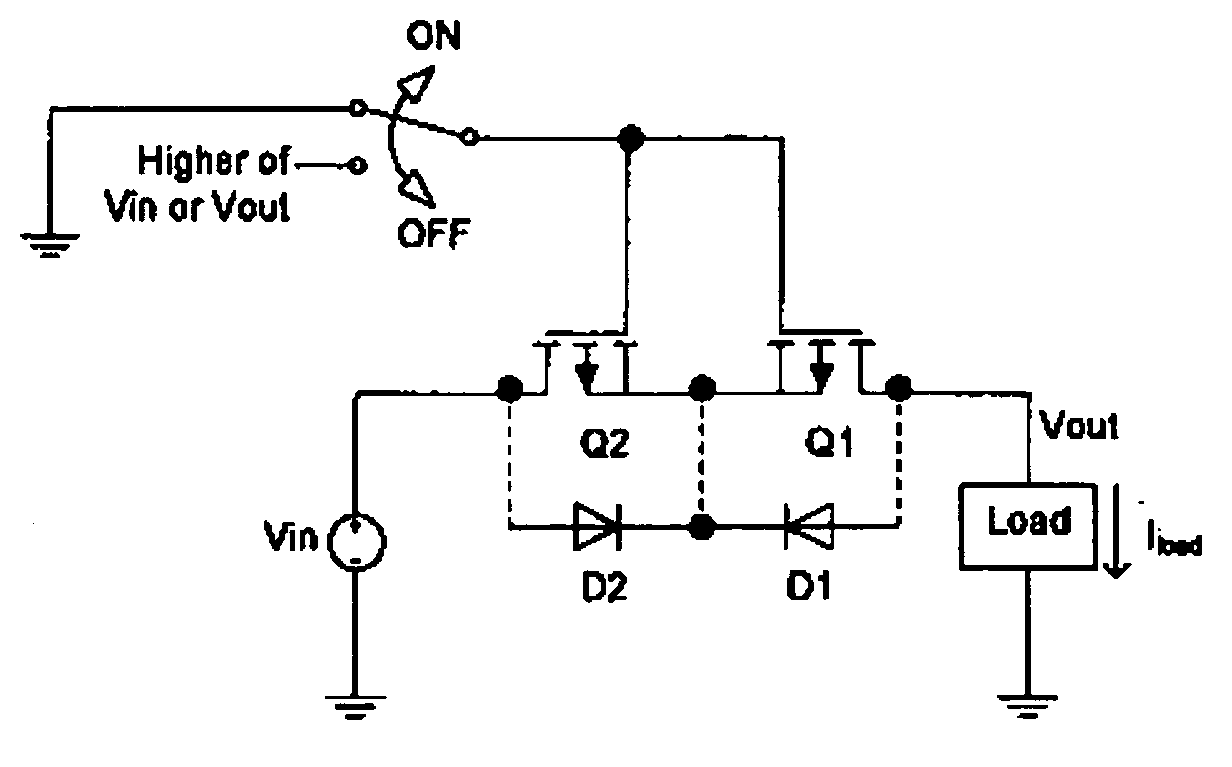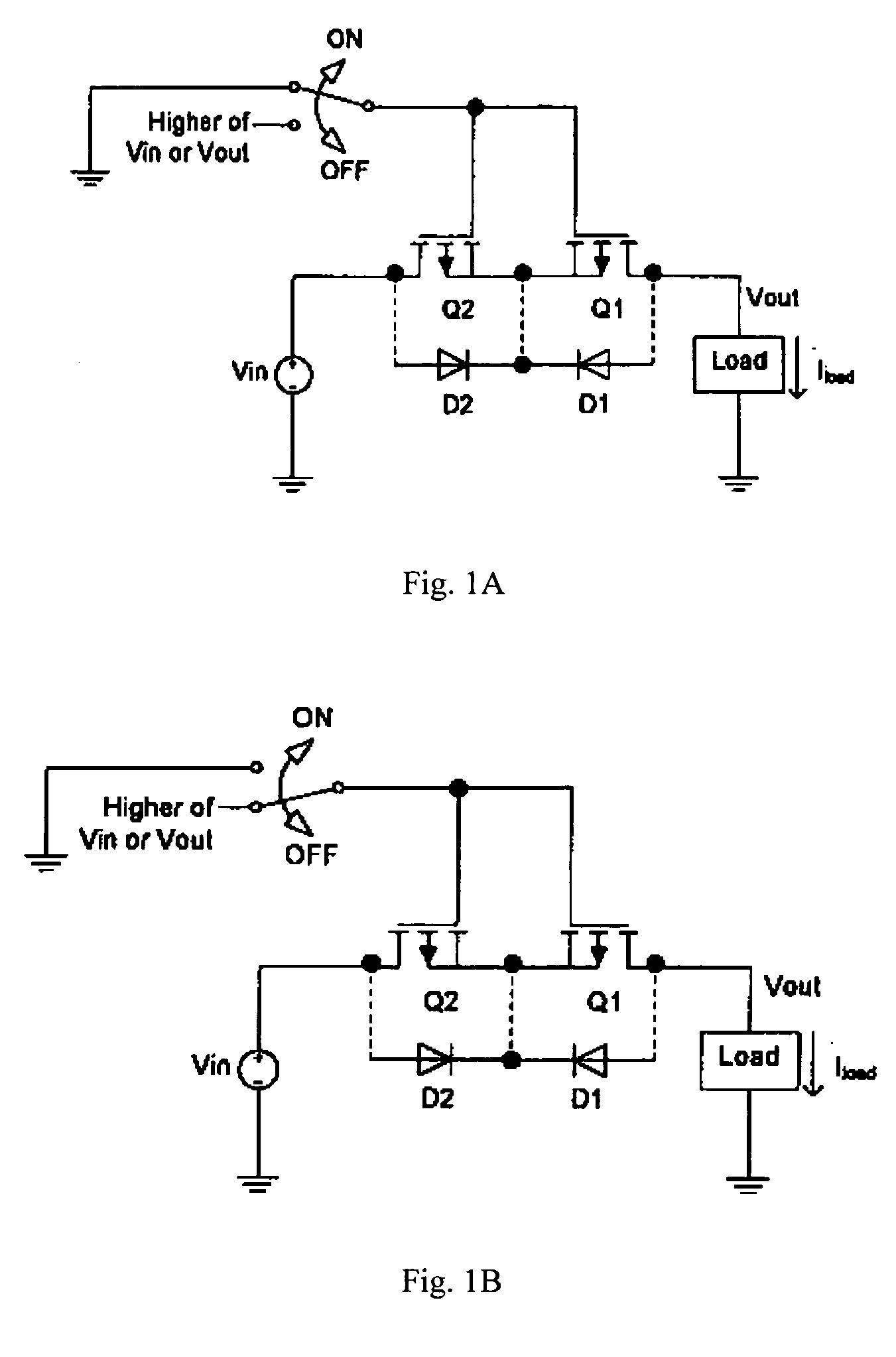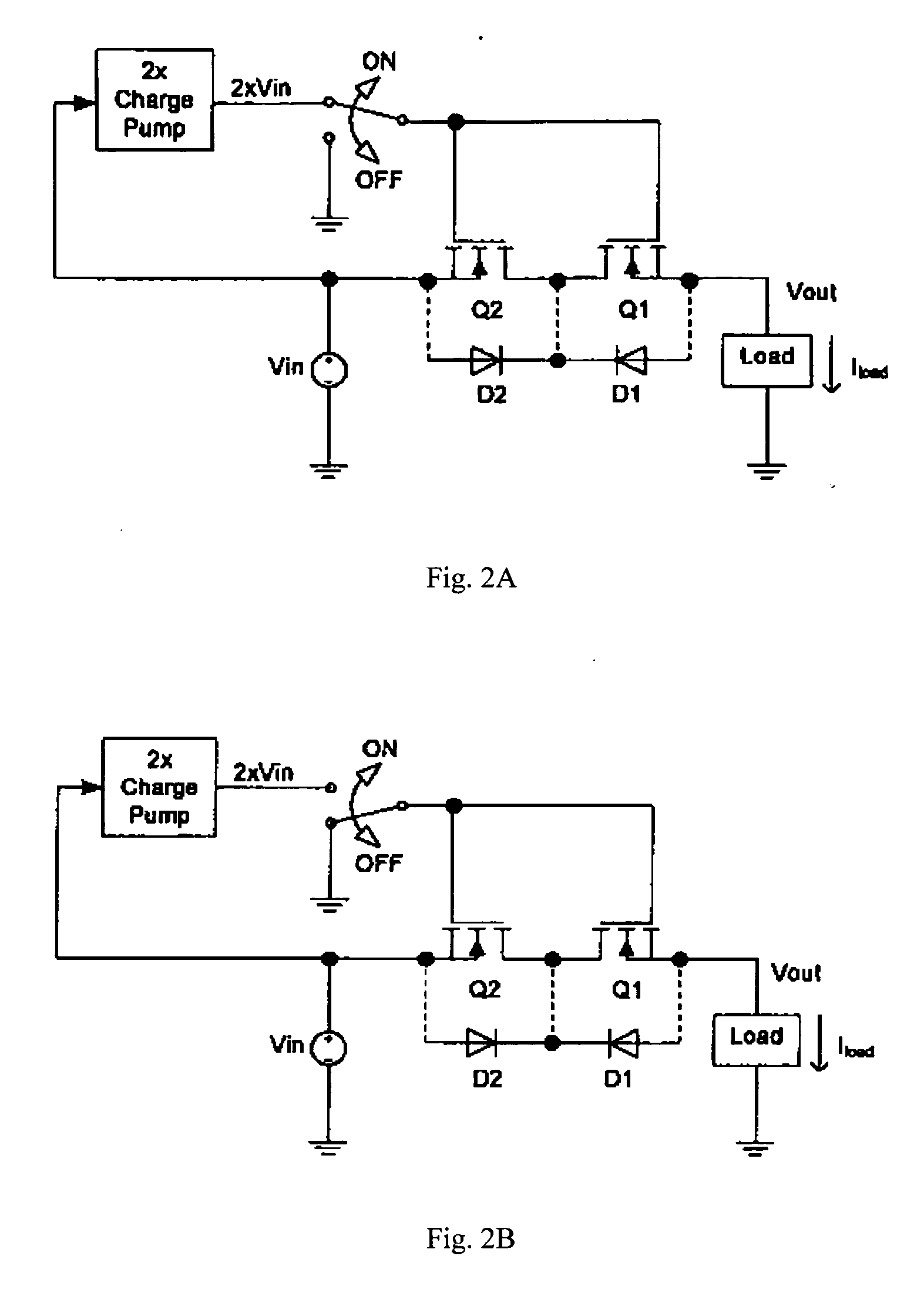Current limited bilateral MOSFET switch with reduced switch resistance and lower manufacturing cost
a technology of mosfet switch and switch resistance, which is applied in the direction of electronic switching, emergency protective arrangements for limiting excess voltage/current, pulse technique, etc., can solve the problems of increasing the switching resistance, high resistance, and inconvenient implementation in devices where higher power efficiency is required
- Summary
- Abstract
- Description
- Claims
- Application Information
AI Technical Summary
Benefits of technology
Problems solved by technology
Method used
Image
Examples
Embodiment Construction
[0023] Referring to FIG. 5A for a circuit diagram for a new and improved current limited bilateral switch implemented with two common-source P-FET transistors to overcome the above-discussed technical difficulties. The current limited bilateral power switch 100 includes two common-source P-FET transistors 110 and 120 shown as Q1 and Q2 respectively with a common source node 125. The second P-FET bilaterally functional transistor 120 serves the functions of a sense resistor, e.g., Rs shown in FIGS. 4A. The voltage drop across the P-FET transistor 120 is sensed by an amplifier 130 shown as A1. The voltage drop across the P-FET transistor 120 is represented by a value of Iload×Rdson2 where Iload is the current passes through the load 140 and the Rdson2 is the resistance between the source and drain of the second P-FET transistor 120. The voltage drop across the P-FET transistor 120 is compared against a current-limiting voltage Vlim 150 that is implemented to prevent the current to exc...
PUM
 Login to View More
Login to View More Abstract
Description
Claims
Application Information
 Login to View More
Login to View More - R&D
- Intellectual Property
- Life Sciences
- Materials
- Tech Scout
- Unparalleled Data Quality
- Higher Quality Content
- 60% Fewer Hallucinations
Browse by: Latest US Patents, China's latest patents, Technical Efficacy Thesaurus, Application Domain, Technology Topic, Popular Technical Reports.
© 2025 PatSnap. All rights reserved.Legal|Privacy policy|Modern Slavery Act Transparency Statement|Sitemap|About US| Contact US: help@patsnap.com



